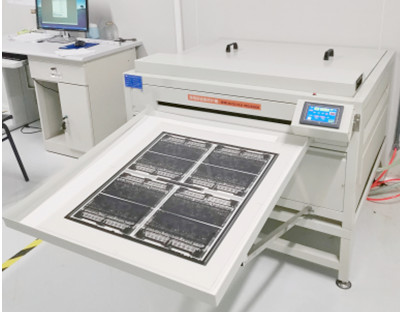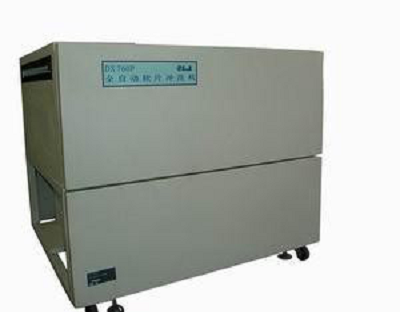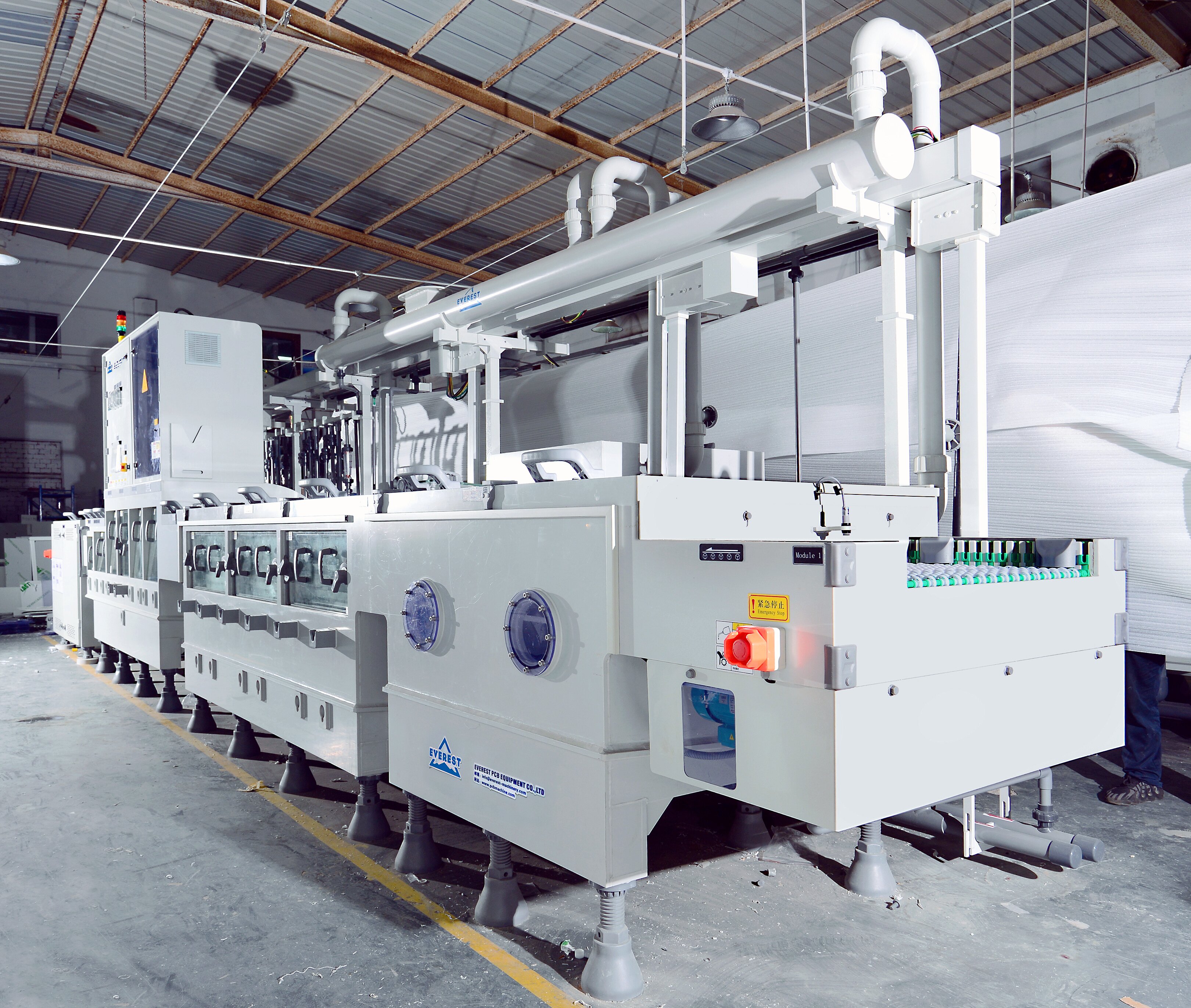I, Causes and solutions of negative film deformation:
Reason:
(1) Temperature and humidity control failure (2) The temperature rise of the exposure machine is too high
Solution:
(1) Generally, the temperature is controlled at 22 ± 2 ℃ and the humidity is 55% ± 5% RH. (2) The exposure machine with cold light source or cooling device shall be used and the backup film shall be replaced continuously.
II, Process method of film deformation correction:
(1)Under the condition of mastering the operation technology of the digital programming instrument, first install the negative film to compare with the drilling test plate, measure its length and width, lengthen or shorten the hole position according to the size of the deformation on the digital programming instrument, and use the drilling test plate after lengthening or shortening the hole position to match the deformed negative film, so as to avoid the tedious work of splicing the negative film, and ensure the integrity and accuracy of the graphics. This method is called “hole location change method”.
(2)In view of the physical phenomenon that the negative film changes with the change of ambient temperature and humidity, take out the negative film in the sealed bag before copying the negative film, and hang it in the air for 4-8 hours under the working environment to deform the negative film before copying, so that the deformation of the copied negative film will be very small. This method is called “hanging in the air method”.
(3)For graphics with simple lines, large line width and spacing, and irregular deformation, the deformed part of the negative film can be cut off and compared with the hole position of the drilling test plate, and then copied, which is called “splicing method”.
(4)This method is called “pad overlap method”, which uses holes on the test board to enlarge the pad to remove heavy and deformed circuit pieces to ensure the minimum ring width technical requirements.
(5)This method is called “mapping method”, in which the figures on the deformed negative film are scaled up and remapped for plate making.
(6)The camera is used to enlarge or reduce the deformed figure, which is called “photographic method”.
III, Notes on relevant methods:
(1)Splicing method:
Applicable to films with less dense lines and inconsistent film deformation of each layer; It is especially suitable for the deformation of resistance welding negative film and multilayer power supply layer negative film; Not applicable to films with high conductor density, line width and spacing less than 0.2mm;
Precautions: The conductor shall be cut as little as possible without damaging the bonding pad. When editing after splicing copies, pay attention to the correctness of the connection relationship.
(2)Change hole location method:
Applicable to consistent deformation of each layer of negative film. This method is also applicable to films with dense lines; Unsuitable The film has uneven deformation, especially local deformation.
Precautions: After using the programmer to lengthen or shorten the hole position, the hole position exceeding the tolerance shall be reset.
(3)Air hanging method:
Applicable; Negative film that has not been deformed and prevented from deformation after copying; It is not applicable to deformed films.
Precautions Hang the negative film in a ventilated and dark environment (if it is safe) to avoid pollution. Ensure that the temperature and humidity of the hanging place are consistent with that of the operation place.
(4)Padding overlap method:
Applicable: the graphic lines are not too dense, and the line width and spacing are greater than 0.30mm; Not applicable. Especially, users have strict requirements on the appearance of printed circuit boards;
Note: After overlapping copies, the pad is elliptical. Halo and deformation of line and disk edges after overlapping copy.
(5)Photographic method:
Applicable: The deformation ratio in the length and width directions of the negative film is consistent, so when it is inconvenient to drill the test plate again, only the silver salt negative film is applicable. Not applicable The film is deformed inconsistently in the length and width directions.
Precautions: The focus should be accurate when taking pictures to prevent line deformation. There is a lot of negative film loss. Generally, satisfactory circuit diagram can be obtained after multiple debugging.








 Sep. 27, 2020
Sep. 27, 2020 





